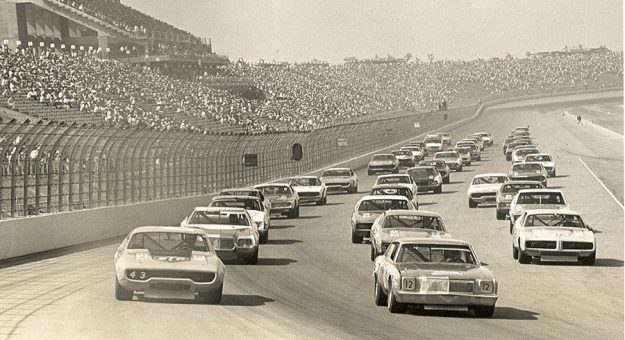HARRISBURG, N.C. — “California Here We Come” has replaced “We Wish You a Merry Christmas” as the most popular tune among NASCAR Cup Series drivers and teams who are anxiously anticipating the Feb. 6 Clash at the L.A. Coliseum.
Despite having its roots in the Southeast, NASCAR’s premier series has been racing in Southern California since 1951 and the organization has sanctioned a West Coast-based stock car series since 1954.
But this marquee non-points event in the iconic L.A. Memorial Coliseum will be unique – unlike any of the previous 97 NASCAR Cup Series races run in the 10-county region.
It’s a huge opportunity for NASCAR to put on a show in the nation’s second-largest metropolitan area and it’s a chance for us to look back at the history of Cup Series racing in Southern California:
NASCAR’s premier series first raced in Southern California on April 8, 1951, with Marshall Teague driving his No. 6 Hudson Hornet to victory at Carrelll Speedway — a half-mile dirt track — in Gardena.
With most of the series regulars competing at Lakeview Speedway in Mobile, Ala., on the same day, Teague was clearly the class of the West Coast competitors as he led the 200-lap race flag to flag to maintain his series points lead.
Carrell Speedway hosted two additional Cup Series races that season and ran a fourth event in 1954 before the track was torn down to make room for a freeway.
Bill France’s premier stock car series then went road racing in 1955 and ’56 at Willow Springs Speedway in Rosamond. Chuck Stevenson won the first visit to the 2.5-mile dirt road course while Marvin Panch topped the second.
On June 8, 1957, the Cup Series cars raced at what eventually became known as Ascot Park Speedway in Gardena for the first time. The new track was located less than a mile from the site of the former Carrell Speedway.
Eddie Pagan started from the pole and led the full distance as the race was stopped after only 150 of the scheduled 200 laps due to billowing dust.
Parnelli Jones (1959) and Eddie Gray (1961) added Ascot victories to their résumés before the series moved on. The track continued to operate through the 1990 season.
Major league stock car racing discovered its future Southern California home when it visited Riverside Int’l Raceway for the first time on June 1, 1958.
Gray started sixth in the 46-car field and stayed in contention throughout the 500-mile marathon on the 2.631-mile paved road course. Driving a 1957 Ford, it took Gray six hours and 17 minutes to complete the distance.
Riverside became a fixture on the NASCAR Cup Series schedule in the 1960s and hosted 48 series races before it was consumed by urban sprawl. Rusty Wallace won the track’s final Cup Series race on June 12, 1988.
Throughout the 1970s, Southern California had a crown jewel motorsports facility in the state-of-the-art Ontario Motor Speedway.
Similar in design to Indianapolis Motor Speedway, the 2.5-mile track opened in 1970 and hosted its first NASCAR Cup Series race on Feb. 28, 1971, with open-wheel star A.J. Foyt claiming the victory.
The track struggled financially and was eventually demolished so the land could be sold to developers. The Cup Series ran a total of nine races at the Ontario facility with Benny Parsons taking the final checked flag on Nov. 15, 1980.
After a lengthy absence following the demise of Riverside Int’l Raceway, NASCAR Cup Series racing returned to Southern California on June 22, 1997, when Jeff Gordon won the inaugural event at what is now known as Auto Club Speedway.
The two-mile track was the built by Roger Penske on the site of the former Kaiser Steel mill in Fontana. The track, now owned by NASCAR, has seen 31 Cup Series races with Alex Bowman winning the most recent on March 1, 2020.
The premier series is scheduled to return to Auto Club Speedway on Feb. 27, one week after the Daytona 500.
– We hope everyone has a merry Christmas and a happy new year.
